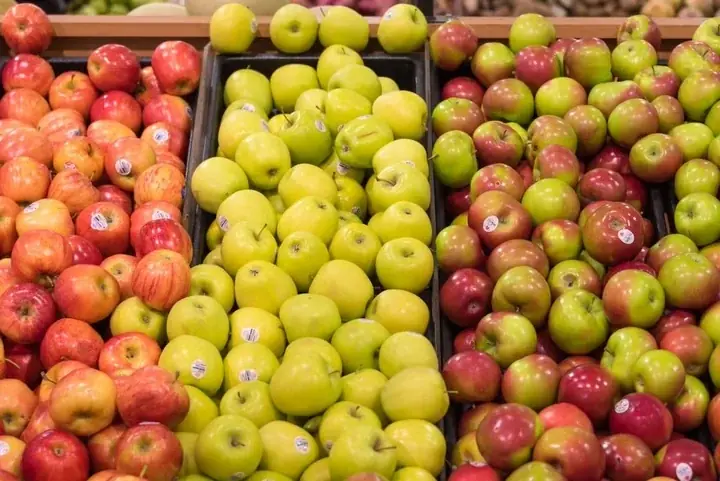
The Hidden Costs of Frost Accumulation in Your Refrigerator: Understanding the Energy Drai

Frost buildup inside your refrigerator might seem like a trivial issue, but it's a problem that can quietly escalate your energy bills while reducing the efficiency of your appliance. For many households, an excessive layer of ice can lead to unforeseen costs and frustrations. This article dives deeper into why frost accumulates in refrigerators, how it impacts energy consumption, and what you can do to keep your appliance running smoothly while saving energy.
Why Does Frost Build Up in Refrigerators?
When we think of a refrigerator, the most important function that comes to mind is keeping food cold. However, refrigerators also play a role in maintaining a stable internal environment where airflow is crucial to effective cooling. Unfortunately, over time, a common problem arises: frost buildup. This can happen in several ways, particularly in older refrigerators or those that lack an automatic defrost system.
The Science Behind Frost Formation
When warm air enters the refrigerator, it contains moisture. Opening the door, placing hot food inside, or simply having poor insulation in the fridge can lead to condensation when the moist air cools down. This condensation eventually freezes, forming a layer of ice that can thicken and obstruct airflow. As frost accumulates, it forces the refrigerator’s motor to work harder to maintain the correct temperature, leading to higher energy consumption and even damaging the unit over time.
Key Causes of Frost Accumulation:
-
Frequent Door Openings: Every time the door opens, humid air from outside enters the refrigerator. If you frequently open the door or leave it ajar for extended periods, the chances of moisture condensing and turning into frost increases.
-
Poor Sealing: Worn-out door seals or improper sealing cause air leaks, letting warm and moist air enter. If you notice the seals are cracked or loose, the refrigerator becomes less efficient and more likely to accumulate frost.
-
Hot Food Inside: When hot food is placed directly in the fridge, it releases moisture that condenses into ice. While this may seem harmless, over time it creates an environment ripe for frost formation.
-
Lack of Regular Defrosting: If you're using an older model that doesn’t have an automatic defrost feature, failing to regularly clear the ice can lead to significant buildup.
The Impact of Frost on Energy Consumption
If you’ve noticed your refrigerator is struggling to maintain a consistent temperature, it could be due to frost buildup inside. Here's how it affects energy efficiency:
1. Insulation Effect
Frost acts as an insulator. Just like how snow accumulates on rooftops and keeps houses warm, frost inside your freezer or refrigerator can prevent the appliance from cooling effectively. A thick layer of ice forms a barrier that disrupts the fridge’s ability to maintain cold temperatures, forcing it to work harder and consume more energy to cool the interior.
2. Overworking the Compressor
The compressor in your fridge is responsible for pumping refrigerant and maintaining a stable temperature. When frost builds up, the compressor is forced to work overtime to compensate for the loss of cooling capacity. This means it runs more frequently and for longer periods, which in turn increases energy consumption.
3. Reduced Cooling Space
As frost accumulates, it can reduce the usable storage space inside your refrigerator. Less space means that the fridge cannot circulate air properly, which causes temperature inconsistencies throughout the appliance. With a less effective cooling system, the fridge needs to consume more energy to reach and maintain the desired temperature.
Additional Problems Caused by Frost Build-Up
Aside from inflated energy bills, frost buildup can lead to other frustrating and costly consequences:
-
Poor Food Preservation: When the cooling system is hindered by frost, food may not stay fresh as long, and some items might even spoil. Perishable food like meat, dairy, and vegetables need consistent temperatures to remain safe to eat.
-
Difficulties in Cleaning: A thick layer of frost makes it much harder to clean the freezer and refrigerator. Defrosting can take hours, and even after defrosting, some areas may still retain excess water or sticky residue from the melted ice.
-
Potential Damage to Appliance Components: Over time, persistent frost buildup can damage key internal components, such as the evaporator coils, fans, and motor. These parts are expensive to repair or replace, leading to higher maintenance costs and potentially a shorter lifespan for your refrigerator.
How to Prevent Frost Build-Up and Save Energy
To prevent frost buildup and ensure your refrigerator is running efficiently, there are several simple maintenance tasks and tips you can follow:
1. Opt for Frost-Free Models
If your current refrigerator is prone to frost buildup, consider upgrading to a frost-free model. These refrigerators come equipped with automatic defrost features that prevent the accumulation of ice by regularly cycling through defrost cycles. This helps maintain energy efficiency and reduces the need for manual intervention.
2. Regularly Defrost Older Models
For older refrigerators that do not have a frost-free feature, make sure to manually defrost the freezer every 2-3 months. Regular defrosting will prevent ice from building up and ensure the appliance operates at peak efficiency.
3. Check and Replace Door Seals
Worn or damaged seals are a common cause of frost buildup. The rubber seals around the door should form a tight closure. If they are cracked, torn, or simply no longer sealing properly, replace them. A good seal will help maintain the internal temperature of the fridge and prevent humid air from entering.
4. Avoid Placing Hot Food Inside
Let food cool to room temperature before placing it in the refrigerator. Hot food introduces moisture, which can condense and freeze, causing unnecessary frost buildup. Additionally, avoid leaving containers open in the fridge, as they can release moisture into the air.
5. Organize Your Refrigerator Efficiently
Proper organization inside the refrigerator allows for better airflow. If items are packed too tightly or stacked haphazardly, air circulation is impeded, and this can cause frost to form in some areas. Leave space around food for air to circulate freely.
Conclusion: Keep Your Refrigerator Efficient and Save Money
The effects of frost buildup go beyond minor inconveniences. It can lead to higher energy costs, poor food preservation, and potential damage to your appliance. By following a few simple steps to prevent frost accumulation, you can ensure that your refrigerator continues to operate efficiently for years to come, saving you money on your energy bills while protecting your food and your appliance.
Maintaining your refrigerator's efficiency is a smart and cost-effective way to promote sustainability and prolong the life of your appliance. Don't let frost take over your fridge—take action now to keep your energy usage low and your refrigerator in top shape.
News in the same category


A couple was both diagnosed with lung cancer, leaving the doctor stunned: "What exactly happened in this house?" It turns out the cause came from here.

Long vs. Round Eggplants: Which One Should You Choose?

Restore Your Grout Lines with This Easy and Budget-Friendly DIY Cleaning Hack

12-Year-Old's Lifelong Dialysis: 5 Favorite Foods Secretly Damaging Your Kidneys

Eating While Screen-Obsessed? Here Are 4 Hidden Health Risks You’re Ignoring

How to Choose the Sweetest Pineapple: Long Leaves or Short?

8 Simple Yet Highly Effective Tips to Stop Snoring

Is It Necessary to Unplug Your Washing Machine After Use

🍎 Why Do Imported Apples Stay Fresh for a Month Without Spoiling?

Top 3 Seat Positions with the Highest Survival Rates in Aviation Emergencie

Simple Finger Test Could Reveal Early Signs of Lung C@ncer and Other Health Issues
A simple finger test, known as the Schamroth window test, can help detect signs of lung c@ncer and other health conditions, including heart problems. Learn how to perform this easy test at home.

Start Your Day Right: 5 Foods That Safeguard Your Kidneys and Reduce Uric Acid

The Ultimate Health Blend: Honey, Cinnamon, Turmeric, Apple Cider Vinegar, and Chia Seeds for Better Health
Discover the powerful benefits of honey, cinnamon, turmeric, apple cider vinegar, and chia seeds. Learn how this natural blend can improve digestion, stabilize blood sugar, and enhance bone and heart health.

Revolutionary C@ncer Treatment: Doctors Target Tumors Without Chemotherapy

Why Your Underwear Gets Bleach-Like Stains: Gynecologist Explains the Causes and What It Means for Your Health
Discover why your underwear may have bleach-like stains and why it's completely normal. A gynecologist explains the role of vag!nal discharge and how it can affect your underwear fabric. Learn when to be concerned and how to maintain vag!nal health.

12 Effective Ways to Remove a Wart on Your Finger
Discover effective methods for removing warts on your fingers, from at-home remedies like salicylic acid and duct tape to professional treatments. Learn how to identify, treat, and prevent warts with expert advice.

5 Household Items That Harbor Formaldehyde: Hidden Cancer Risks Lurking in Your Home

Air Conditioner Efficiency: Continuous Use vs. Frequent Switching
News Post

Is T!kT0k Ru!ning Relationships? How My Girlfriend’s Dream Destr0yed Our Future Together
My girlfriend quit her job to become a T!kT0ker, and I ended up working two jobs to support us. Read how social media dreams can destroy relationships and the heartbreaking consequences of love and sacrifice.

Family Ties Fractured: Sister-in-Law's Cruelty Turns Into a Test of Love
A tense family conflict forces Tina to confront her sister-in-law's cruelty and stand up for her place in her own family, leading to a powerful and emotional realization about love and belonging.

He Wants Me to Change for His Family: The Pain of Feeling Invisible
A woman faces emotional turmoil as her partner pressures her to change her appearance for the sake of his family's approval. In a world where self-love is key, she learns the hard way that true love starts with loving yourself.

Effective Natural Remedy to Reverse Grey Hair and Prevent Future Greying
The onion juice, black seed powder, and henna remedy offers a safe, effective, and affordable way to address grey hair and improve overall hair health.

Garlic Oil for Hair Growth: The Ultimate DIY Hair Treatment for Stronger, Healthier, and Thicker Hair
Garlic oil is a powerful, natural remedy for various hair concerns. Its ability to promote hair growth, reduce dandruff, and strengthen hair makes it an excellent addition to your hair care routine.

Strawberries and Baking Soda for Teeth Whitening: Myth or Miracle? Exploring Natural Alternatives for a Brighter Smile
The potential risks of enamel erosion and the limited whitening power make this DIY remedy a less-than-ideal choice for those looking for long-term, safe, and effective results.

DIY Natural Body Whitening Bath Powders: 4 Effective Recipes for Glowing, Smooth Skin
These simple recipes use natural ingredients that are easily accessible and provide multiple skin benefits, including brightening, exfoliating, and nourishing.

A Family of Three Diagnoses with Liver C@ncer, Doctor Furious as He "Accuses" Two Foods in the Fridge as the Culprits

A couple was both diagnosed with lung cancer, leaving the doctor stunned: "What exactly happened in this house?" It turns out the cause came from here.

Beyond the BuII!e$: How One Girl Stitched Her Way Back to Confidence with Crochet
After facing buIIy!ng for her unique style, a 6th-grade girl found her voice and confidence again through crochet. Discover this inspiring story of artistic triumph, self-expression, and how handmade passion can build an empire, one stitch at a time.

Long vs. Round Eggplants: Which One Should You Choose?

The Heartbre@king Selfie: A Dream Shattered in the Blink of an Eye
On June 12, a family’s dream of a new life in London ended tragically in a plane crash. Discover the emotional story of Pratik Joshi’s family, their dreams, and the reminder that life is fragile.

Restore Your Grout Lines with This Easy and Budget-Friendly DIY Cleaning Hack

12-Year-Old's Lifelong Dialysis: 5 Favorite Foods Secretly Damaging Your Kidneys

5 DIY Skin Toners for Radiant, Smooth Skin: Natural Remedies for Every Skin Type
By incorporating these simple DIY toners into your daily skincare regimen, you can achieve smoother, clearer, and more radiant skin without the need for expensive products.

Eating While Screen-Obsessed? Here Are 4 Hidden Health Risks You’re Ignoring

Should You Stay or Let Go? How I Realized I Wasn't His First Choice
A heartfelt and emotional journey of love, heartbreak, and self-discovery. When your partner is still hung up on their ex, is it worth fighting for the relationship? Discover the painful truth behind choosing yourself over unrequited love.

Vaseline and Coffee: The Ultimate DIY Skincare Duo to Achieve Wrinkle-Free Skin Naturally
By incorporating these ingredients into your skincare routine through DIY masks and scrubs, you can rejuvenate your skin, reduce the appearance of wrinkles, and achieve a youthful, radiant complexion.

The Flowers that Kept Us Apart: A Love Story Decades in the Making
A woman embarks on a journey to find out the truth behind mysterious flowers sent to her every year, only to uncover a love story that had been hidden for 20 years.

I Found My Husband's Secret Conversations With Another Woman – And What He Told Me Br0ke My Heart
A wife discovers her husband's secret texts with a woman he met at a strip club. What seemed like innocent conversations quickly turns into an affair, and now she has to decide if she can ever trust him again.